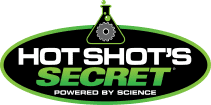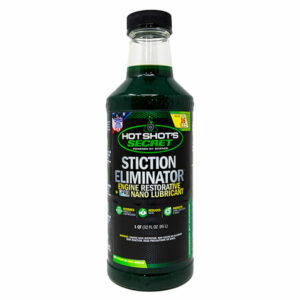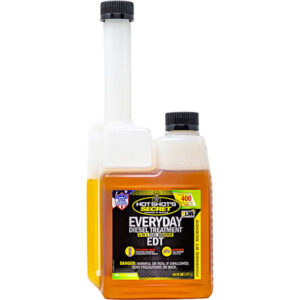
Ford’s Power Stroke® diesel engines have been powering Ford trucks since 1994, earning a near-legendary reputation for stump-pulling torque, confident towing capacity and true heavy-duty capability. This comprehensive Ford Power Stroke engine comparison breaks down Power Stroke generations, highlights common issues and offers expert insights into which years are the best bets for performance and long-term reliability.
No matter which engine powers your trusty Ford truck, Hot Shot’s Secret offers proven oil and fuel additives that clean, protect and restore performance to keep your Power Stroke running strong.
What Makes a Great Power Stroke Engine?
Choosing the best Power Stroke engine isn’t about analyzing statistics — it’s about reliability, towing power and long-term durability. Chronic failure points, such as EGR coolers, head studs and injector systems, directly impact reliability, increasing the overall cost of ownership. These influence ratings more than raw spec sheet data.
Our evaluation criteria include:
- Longevity and reliability: Engines that consistently reach high mileages with fewer major repairs rank higher. Widespread issues like HEUI stiction or EGR-related failures can drag down real-world durability.
- Torque and horsepower: Broad, usable torque for grade climbing and towing, plus solid horsepower for overtaking, are considerations — but we favor results achieved without compromising long-term reliability.
- Towing and hauling ability: Power Stroke towing performance and payload ratings matter most when they’re backed by dependable cooling, fueling and exhaust systems that hold up under load over time.
- Fuel system design: Simple, robust fuel systems with fewer failure modes, such as reduced susceptibility to HEUI-injector stiction (7.3L/6.0L) or pump wear, achieve better scores for reliability, uptime and cost.
- Emissions system reliability: EGR coolers, EGR valves, DPFs and related sensors must be tough enough to withstand real work — recurring issues in these emissions systems negatively impact reliability rankings.
- Aftermarket support: Proven fixes (such as upgraded oil coolers and head studs), strong parts availability and tuning options that maintain reliability create a positive ownership experience and add long-term value.
A Breakdown by Generation of the Evolution of Power Stroke Engines
From the ultra-simple 7.3L IDI era through the legendary 7.3L Power Stroke and into the more complex emissions years, each generation in the evolution of these iconic engines marked a clear step in torque, refinement and technology. We’ll trace what changed — and why it matters — noting how reliability, fueling and emissions systems evolved.
We’ll also compare headliners like 6.0 vs. 6.4 vs. 6.7 Power Stroke so you can quickly see which era best fits your priorities, from longevity and towing to modern performance and emissions.
7.3L IDI (1988–1994)
- Pros: Ultra-simple pre-Power Stroke era engines with indirect injection design that are valued for their simplicity and dependability.
- Cons: Modest power and cold starts compared with later direct-injection engines. They also have fewer modern amenities and aftermarket power options.
7.3L Power Stroke (1994–2003)
- Pros: Legendary reliability, strong real-life longevity and straightforward maintenance with no major aftertreatment emissions hardware.
- Cons: Older technology than newer diesels — without upgrades, output lags behind modern torque figures.
6.0L Power Stroke (2003–2007)
- Pros: Strong performance for its time with a quick-spooling VGT turbo, and significantly lighter than the 7.3L Power Stroke it replaced.
- Cons: Prone to EGR cooler failures, injector “failure”, head gasket and head stud issues, and oil cooler limitations that can increase ownership costs.
6.4L Power Stroke (2008–2010)
- Pros: Twin-turbo design improves power and drivability, resulting in a more refined engine than its predecessor.
- Cons: High fuel dilution and DPF-related issues increase maintenance costs and frequency. The engine’s relatively short production run also makes finding parts challenging.
6.7L Power Stroke (2011–present)
Early 6.7L (2011–2016)
- Pros: First in‑house design with big torque gains and an SCR (DEF) system, enabling stronger performance with cleaner emissions.
- Cons: Some fleets report EGR/DEF component issues and sensor‑related downtime in certain engine duty cycles.
Later 6.7L (2017–present)
- Pros: Stronger, more refined internals with improved fuel and emissions systems and class‑leading power/towing — overall refinement and reliability trending upward.
- Cons: Greater system complexity and higher component costs when undertaking repairs or replacements compared with older generations.
The Best Power Stroke Engines and Top Picks for Performance and Reliability
From old-school durability to modern muscle, some top Power Stroke diesel engines stand out for different reasons. We profile three classic favorites, highlighting the blend of towing confidence, real-world performance and longevity that has made them evergreen choices for work, play and long-term ownership.
1. The Gold Standard: 7.3L Power Stroke (1994–2003)
The 7.3L is widely regarded as Ford’s longest-running, most reliable Power Stroke Engine, favored for its longevity, basic electronics and ease of repair. Its uncompromising durability makes it a favorite for robust work settings and long-term ownership — even though its stock horsepower trails modern diesels with advanced turbo and fueling systems.
2. The Modern Workhorse: 6.7L Power Stroke (2017–Present)
The 6.7L Power Stroke delivers up to 475 hp and 1,050 lb‑ft torque in newer models. It offers strong towing and a noticeably quieter, more refined running quality, while remaining emissions‑compliant. Later 6.7s show fewer chronic issues than earlier generations, aided by stronger internals and matured emissions/fuel systems. These powerhouses offer plenty of headroom for towing and work‑focused upgrades. However, greater system complexity can raise ownership and repair costs compared with older platforms.
3. Problematic, but Plenty of Potential With Mods: 6.0L Power Stroke (2003–2007)
Known for a few reliability trouble spots — notably EGR and injector issues — the 6.0L Power Stroke remains a solid choice for Ford enthusiasts with aftermarket upgrades. Its quick-spooling VGT, strong factory output and outstanding mod potential outweigh the weaknesses. Recommended upgrades include EGR fixes, stronger head studs and meticulous upkeep. Plan on frequent maintenance to stay ahead of failures. Although aftermarket mods can deliver impressive gains, added complexity and regular repairs can raise ownership costs.
The Most Reliable Power Stroke Engine Years
Selecting the right Power Stroke is a big decision that can have long-lasting consequences regarding reliability and maintenance costs. We evaluated the longevity, cost of ownership and uptimes of engine generations to identify standouts and flag problem years.
These are our top picks and Power Stroke engine years to avoid.
Top Power Stroke years:
- 1999–2003 (7.3L Power Stroke): Minimal issues and maximum uptime. The electronics are simple, and no major aftertreatments are needed to keep them running reliably.
- 2020–present (6.7L Power Stroke): Most refined and powerful. They offer quieter operation with improved emissions — more powerful internals provide top-tier towing and reliability under heavy use.
Years to be cautious of:
- 2003–2007 (6.0L): Common failures unless upgraded include EGR cooler, oil cooler and head gasket/stud issues and injector/FICM problems. This engine benefits from “bulletproofing” and vigilant maintenance.
- 2008–2010 (6.4L): Fuel dilution, turbo and DPF failures have been noted. The twin turbos provide good power, but frequent DPF regeneration cycles raise costs, and the short production run makes sourcing parts challenging.
Which Power Stroke Engine Is Right for You?
After a careful analysis, the final verdict is in. Ultimately, your choice should reflect your specific needs, application and, of course, your personal preferences.
| Best Power Stroke Engine | Characteristics | Standout Features |
| Best all-around: 7.3L Power Stroke | Minimal issues and easy maintenance. | Power is modest by modern standards, but dependable performance and parts availability make it a top, all-around pick. |
| Best modern: 6.7L Power Stroke (2017–present) | Heavy hauling, tuning and reliability. | Class-leading torque and towing, refined operation and improved emissions deliver long-term value. |
| Best for tuning (with caution): 6.0L Power Stroke | Good maintenance tolerance and modding comfort. | Quick-spooling VGT and responsiveness to mods make it a solid choice for Ford enthusiasts. |
Explore Hot Shot’s Secret Performance Upgrades
Power Stroke engines are prized for their robust power, durability and good resale value. While some Ford diesel engine problems have been noted in particular years, Hot Shot’s Secret offers products to keep your Power Stroke running smoothly and reliably for longer. Backed by the best money-back guarantee in the industry, our scientifically proven products improve fuel efficiency, reduce common engine and drive train problems and save you money on replacements and repairs.
Some recommended products for your Power Stroke engine include:
- Stiction Eliminator: Targets injector and stiction issues.
- Diesel Extreme: Provides a deep clean for your fuel system.
- EDT: Improves combustion and ignition efficiency.
- LX4 Lubricity Extreme: Remedies issues associated with low lubricity fuel to protect fuel systems.
- FR3® Friction Reducer: Improves engine responsiveness.
- Blue Diamond Oil: Delivers maximum protection for your engine, which supports longevity.
Workday Ready, Weekend Strong: Find Power Stroke Bundles That Work
Hot Shot’s Secret makes it easier than ever to keep your Power Stroke rumbling reliably with product bundles formulated especially for these powerful engines.
- Bulletproof Your Powerstroke: The ideal bundle to protect your engine and enhance performance.
- Tuneup Trio: Gives your fuel system and engine a once-over to clean the system and increase fuel economy.
Contact the experts at Hot Shot’s Secret for customized support, or order your Power Stroke boosting products now!




